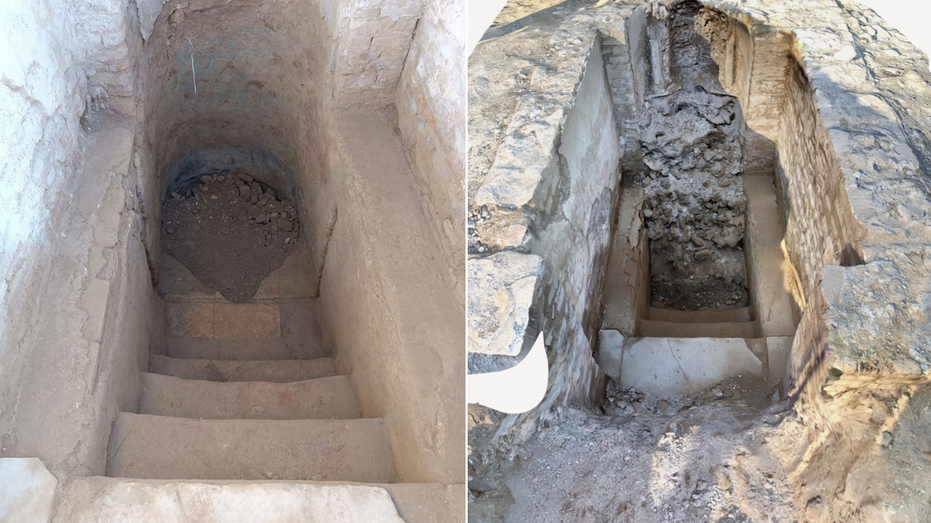- by foxnews
- 31 Mar 2025
Ancient Jewish ritual bath, oldest of its kind in Europe, uncovered by archaeologists
Archeologists recently uncovered an historic 1,600-year-old Jewish bath known as a mikveh in Ostia Antica, the archaeological site of an ancient Roman city.

A 1,600-year-old Jewish bath, also known as a mikveh, was recently uncovered in Italy - and the find is the oldest of its kind in Europe.
On March 10, Italian officials announced the discovery, which was found at the archaeological site of Ostia Antica last summer.
In a statement translated from Italian to English, the Ostia Antica Archaeological Park described the mikveh as being a "small semi-underground room with a well underneath."
Pictures released by officials show ancient stairs leading down to what was once used as a ritual bath. The steps show "notable traces of wear," according to the statement, and are "flanked by two masonry shoulders covered inside with hydraulic plaster."
"In the north-eastern corner, immediately above the northern abutment, there is a through hole in the masonry, probably intended to house a pipeline for the supply of water," the statement says.
The well's diameter measures roughly 3.5 feet and is "crowned by a brick ring probably added at a later time, certainly intended for the collection of groundwater."
As archaeologists dug deeper, they also uncovered a lamp from either the 5th or 6th centuries A.D. - roughly the same age as the mikveh.
"Intended for people to dive (but also objects) for purification purposes, [mikvehs] generally appear as rectangular basins, in most cases covered, dug into the ground and covered with hydraulic plaster, with a row of steps that occupy their entire width, connected directly or indirectly to a spring, a well or a rainwater collection tank," the press release described.
Mikvehs are used by Jews to achieve ritual purity, such as during a religious conversion, while cleaning utensils or while preparing for a wedding. The latest discovery is the only ancient Roman-era mikveh found in Europe.
Though few ancient mikvehs survive in Europe, they undoubtedly existed. Historians say that the decline of mivkehs can be pointed to the Roman persecution of Jews in the first century.
"Widely spread in Judea, Galilee and Idumea in the Herodian age, particularly within residential buildings, they progressively decreased in the 1st century until they almost completely disappeared at the beginning of the 2nd, in connection with the full Romanization of the region following the destruction of the Temple in the year 70 AD and the subsequent repression of Bar Kokhba in 135 AD," the release said.
"It represents a unique one in the Roman Mediterranean area outside the Land of Israel and attests to how deep-rooted the Jewish presence was in the heart of Roman times," Giuli noted.
In a statement, Victor Fadlun, the president of the Jewish Community of Rome, said that the discovery brought on "emotion and pride."
"I thank those who have made decisive scientific and financial contributions for this important result."
- by foxnews
- descember 09, 2016
Travel do's and don'ts for DC cherry blossom season amid peak blooms: 'Pack your patience'
Peak bloom has been reached for the cherry blossom trees in Washington, D.C., as millions of travelers and tourists arrive. A National Park Service ranger shared tips for seeing the blooms.
read more


